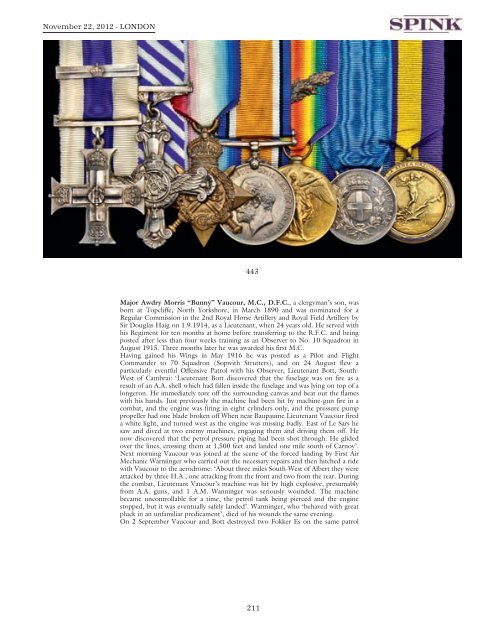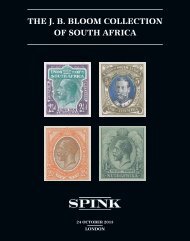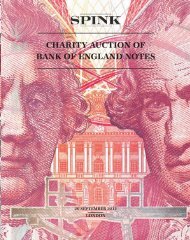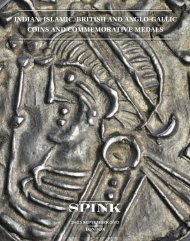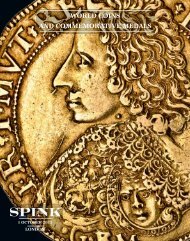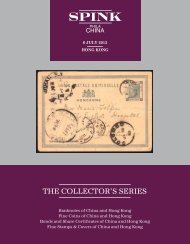- Page 1 and 2:
22 NOVEMBER 2012 LONDON ORDERS, DEC
- Page 3 and 4:
ORDERS, DECORATIONS, CAMPAIGN MEDAL
- Page 5 and 6:
November 22, 2012 - LoNdoN THURSDAY
- Page 7 and 8:
November 22, 2012 - LoNdoN 2 5
- Page 9 and 10:
November 22, 2012 - LoNdoN Brigadie
- Page 11 and 12:
‘A Short Walk in the Hindu Kush
- Page 13 and 14:
November 22, 2012 - LoNdoN 6 11
- Page 15 and 16:
November 22, 2012 - LoNdoN 8 The C.
- Page 17 and 18:
November 22, 2012 - LoNdoN 10 10 Th
- Page 19 and 20:
November 22, 2012 - LoNdoN Kearns (
- Page 21 and 22:
November 22, 2012 - LoNdoN 11 A Sup
- Page 23 and 24:
November 22, 2012 - LoNdoN Kennett,
- Page 25 and 26:
November 22, 2012 - LoNdoN 12 12 Th
- Page 27 and 28:
November 22, 2012 - LoNdoN 14 The G
- Page 29 and 30:
November 22, 2012 - LoNdoN 16 Famil
- Page 31 and 32:
November 22, 2012 - LoNdoN Captain
- Page 33 and 34:
November 22, 2012 - LoNdoN 19 The B
- Page 35 and 36:
November 22, 2012 - LoNdoN x22 Dist
- Page 37 and 38:
November 22, 2012 - LoNdoN Warrant
- Page 39 and 40:
November 22, 2012 - LoNdoN 26 The U
- Page 41 and 42:
November 22, 2012 - LoNdoN us tense
- Page 43 and 44:
November 22, 2012 - LoNdoN CAMPAIGN
- Page 45 and 46:
November 22, 2012 - LoNdoN 30 31 30
- Page 47 and 48:
November 22, 2012 - LoNdoN 35 35 Pa
- Page 49 and 50:
November 22, 2012 - LoNdoN 37 39 37
- Page 51 and 52:
November 22, 2012 - LoNdoN 42 Three
- Page 53 and 54:
November 22, 2012 - LoNdoN 45 An I.
- Page 55 and 56:
November 22, 2012 - LoNdoN action)
- Page 57 and 58:
November 22, 2012 - LoNdoN 54 A Fin
- Page 59 and 60:
November 22, 2012 - LoNdoN 56 56 Fo
- Page 61 and 62:
November 22, 2012 - LoNdoN 61 Three
- Page 63 and 64:
November 22, 2012 - LoNdoN 67 The S
- Page 65 and 66:
November 22, 2012 - LoNdoN Sergeant
- Page 67 and 68:
November 22, 2012 - LoNdoN 72 Bethn
- Page 69 and 70:
November 22, 2012 - LoNdoN 76 Loyal
- Page 71 and 72:
November 22, 2012 - LoNdoN 80 Royal
- Page 73 and 74:
November 22, 2012 - LoNdoN 84 Bury
- Page 75 and 76:
November 22, 2012 - LoNdoN 87 22nd
- Page 77 and 78:
November 22, 2012 - LoNdoN 91 Dewsb
- Page 79 and 80:
November 22, 2012 - LoNdoN 95 (Loya
- Page 81 and 82:
November 22, 2012 - LoNdoN 99 37th
- Page 83 and 84:
November 22, 2012 - LoNdoN 102 Irvi
- Page 85 and 86:
November 22, 2012 - LoNdoN 106 Loch
- Page 87 and 88:
November 22, 2012 - LoNdoN 110 Monm
- Page 89 and 90:
November 22, 2012 - LoNdoN 114 5th
- Page 91 and 92:
November 22, 2012 - LoNdoN 118 Oxfo
- Page 93 and 94:
November 22, 2012 - LoNdoN 121 Sadl
- Page 95 and 96:
November 22, 2012 - LoNdoN 125 Loya
- Page 97 and 98:
November 22, 2012 - LoNdoN 129 Towe
- Page 99 and 100:
November 22, 2012 - LoNdoN 133 West
- Page 101 and 102:
November 22, 2012 - LoNdoN 136 Worl
- Page 103 and 104:
November 22, 2012 - LoNdoN 140 23rd
- Page 105 and 106:
November 22, 2012 - LoNdoN 144 Red
- Page 107 and 108:
November 22, 2012 - LoNdoN 148 149
- Page 109 and 110:
November 22, 2012 - LoNdoN 152 Nava
- Page 111 and 112:
November 22, 2012 - LoNdoN 156 Nava
- Page 113 and 114:
November 22, 2012 - LoNdoN 160 Nava
- Page 115 and 116:
November 22, 2012 - LoNdoN 163 Nava
- Page 117 and 118:
November 22, 2012 - LoNdoN 165 Nava
- Page 119 and 120:
November 22, 2012 - LoNdoN 169 170
- Page 121 and 122:
November 22, 2012 - LoNdoN 173 174
- Page 123 and 124:
November 22, 2012 - LoNdoN 177 Mili
- Page 125 and 126:
November 22, 2012 - LoNdoN 181 182
- Page 127 and 128:
November 22, 2012 - LoNdoN 185 186
- Page 129 and 130:
November 22, 2012 - LoNdoN 189 189
- Page 131 and 132:
November 22, 2012 - LoNdoN x191 Ale
- Page 133 and 134:
November 22, 2012 - LoNdoN 195 Alex
- Page 135 and 136:
November 22, 2012 - LoNdoN 199 x199
- Page 137 and 138:
November 22, 2012 - LoNdoN x202 Hon
- Page 139 and 140:
November 22, 2012 - LoNdoN 206 Army
- Page 141 and 142:
November 22, 2012 - LoNdoN 210 210
- Page 143 and 144:
November 22, 2012 - LoNdoN 213 Matt
- Page 145 and 146:
November 22, 2012 - LoNdoN 217 218
- Page 147 and 148:
November 22, 2012 - LoNdoN 222 222
- Page 149 and 150:
November 22, 2012 - LoNdoN 229 Chin
- Page 151 and 152:
November 22, 2012 - LoNdoN 233 234
- Page 153 and 154:
November 22, 2012 - LoNdoN 246 Crim
- Page 155 and 156:
November 22, 2012 - LoNdoN 254 255
- Page 157 and 158:
November 22, 2012 - LoNdoN 260 261
- Page 159 and 160:
November 22, 2012 - LoNdoN 266 267
- Page 161 and 162: November 22, 2012 - LoNdoN 271 272
- Page 163 and 164: November 22, 2012 - LoNdoN 276 277
- Page 165 and 166: November 22, 2012 - LoNdoN 284 285
- Page 167 and 168: November 22, 2012 - LoNdoN 289 290
- Page 169 and 170: November 22, 2012 - LoNdoN 301 303
- Page 171 and 172: November 22, 2012 - LoNdoN 312 315
- Page 173 and 174: November 22, 2012 - LoNdoN 324 Quee
- Page 175 and 176: November 22, 2012 - LoNdoN 341 Indi
- Page 177 and 178: November 22, 2012 - LoNdoN 354 Arct
- Page 179 and 180: November 22, 2012 - LoNdoN MILITARI
- Page 181 and 182: November 22, 2012 - LoNdoN 365 365
- Page 183 and 184: November 22, 2012 - LoNdoN 369 Mini
- Page 185 and 186: November 22, 2012 - LoNdoN 389 Mini
- Page 188 and 189: 396 Honours and Awards Bestowed upo
- Page 190 and 191: 402 orders, deCoratioNs, CampaigN m
- Page 192 and 193: 408 x408 Germany, Brunswick, Waterl
- Page 194 and 195: orders, deCoratioNs, CampaigN medaL
- Page 196: orders, deCoratioNs, CampaigN medaL
- Page 199 and 200: November 22, 2012 - LoNdoN x431 Rus
- Page 201 and 202: November 22, 2012 - LoNdoN x435 Vat
- Page 203 and 204: November 22, 2012 - LoNdoN 438 201
- Page 205 and 206: 439
- Page 207 and 208: November 22, 2012 - LoNdoN 440 440
- Page 209 and 210: November 22, 2012 - LoNdoN and in t
- Page 211: November 22, 2012 - LoNdoN 442 442
- Page 215 and 216: November 22, 2012 - LoNdoN 444 A Su
- Page 217 and 218: November 22, 2012 - LoNdoN days, de
- Page 219 and 220: November 22, 2012 - LoNdoN Erchin.
- Page 221 and 222: November 22, 2012 - LoNdoN and dive
- Page 223 and 224: November 22, 2012 - LoNdoN crash to
- Page 225 and 226: November 22, 2012 - LoNdoN Captain
- Page 227 and 228: November 22, 2012 - LoNdoN ground a
- Page 229 and 230: November 22, 2012 - LoNdoN refers);
- Page 231 and 232: November 22, 2012 - LoNdoN 451 Capt
- Page 233 and 234: November 22, 2012 - LoNdoN 454 Capt
- Page 235 and 236: 457
- Page 237 and 238: November 22, 2012 - LoNdoN Group Ca
- Page 239 and 240: November 22, 2012 - LoNdoN 464 Thre
- Page 241 and 242: November 22, 2012 - LoNdoN 468 468
- Page 243 and 244: November 22, 2012 - LoNdoN 469 Lieu
- Page 245 and 246: November 22, 2012 - LoNdoN 471 471
- Page 247 and 248: November 22, 2012 - LoNdoN Lieutena
- Page 249 and 250: November 22, 2012 - LoNdoN Lieutena
- Page 251 and 252: November 22, 2012 - LoNdoN 484 Pair
- Page 253 and 254: November 22, 2012 - LoNdoN 489 Thre
- Page 255 and 256: November 22, 2012 - LoNdoN Captain
- Page 257 and 258: November 22, 2012 - LoNdoN 495 Grea
- Page 259: November 22, 2012 - LoNdoN Auction
- Page 262 and 263:
PLEASE PRINT CLEARLY IN BLOCK LETTE
- Page 264 and 265:
Lot Price 195 £1,200 196 £580 197
- Page 266:
SPINK “ON THE GO” TECHNOLOGY Sp
- Page 270 and 271:
5 auctions per year in our new gall
- Page 272 and 273:
4.3 Bidding as Principal When makin
- Page 274 and 275:
5.13.1.3 as soon as possible follow
- Page 276:
£25 © Copyright 2012 STAMPS COINS


